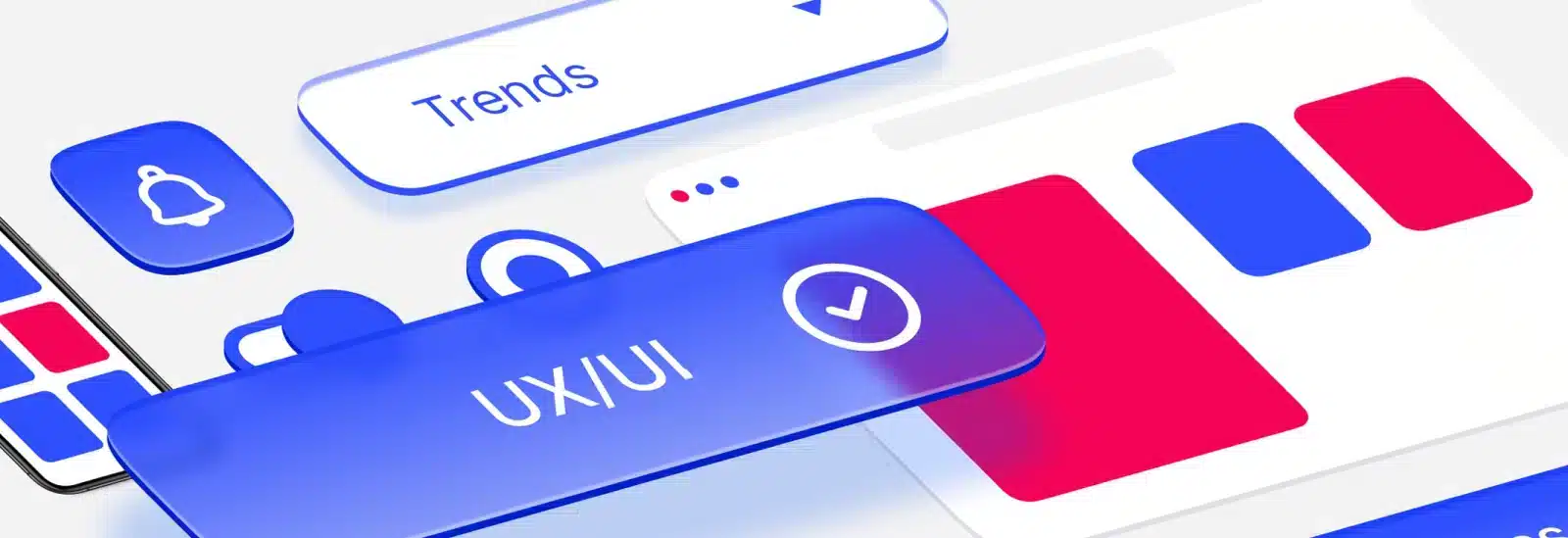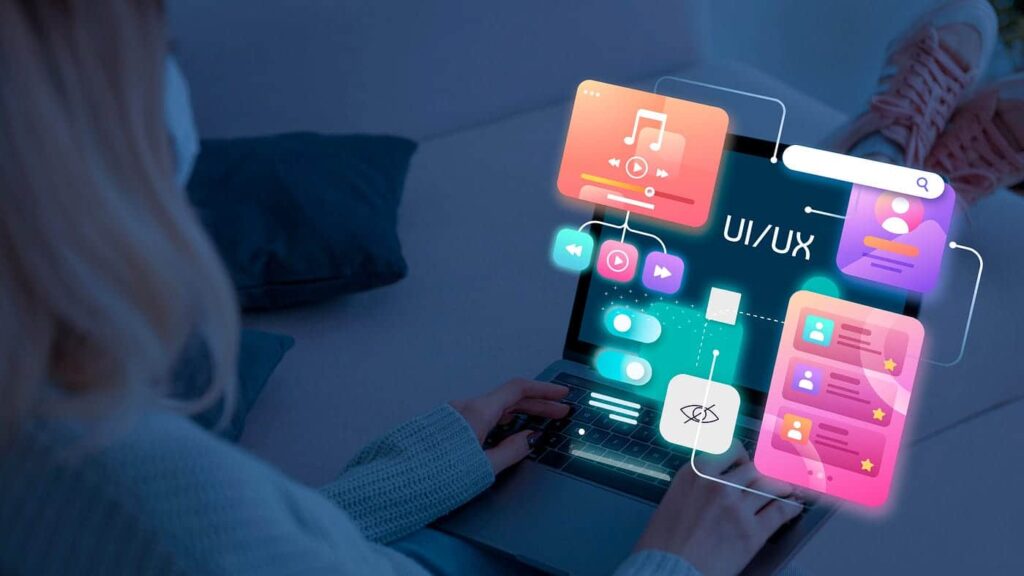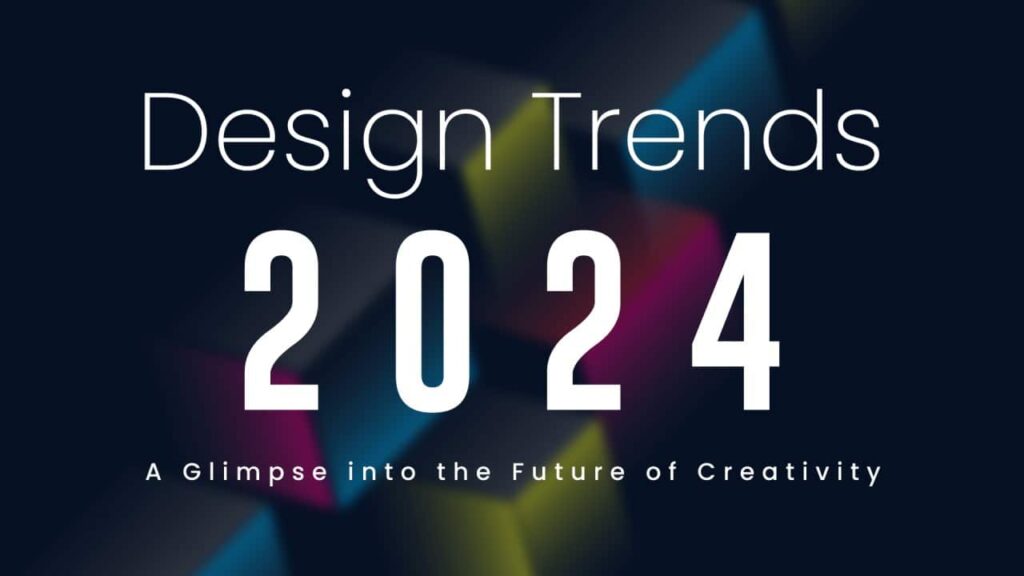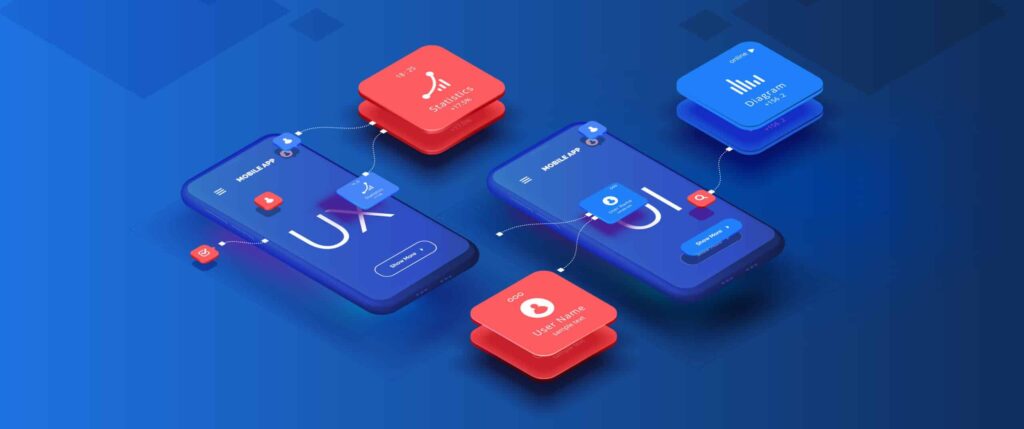
An Overview
The field of UI/UX design is continually progressing, with fresh trends coming up all the time. As technology grows and user demands alter, designers must modify their techniques in order to remain ahead of the game.
In the upcoming years up to 2024, these are some of the leading trends in UI/UX designs that are anticipated:
AI-Enabled Personalization Gaining Momentum:
AI-driven personalization has been steadily rising in popularity. AI-driven UI/UX design for hyper-personalised customer experience are becoming an increasingly common solution for businesses to tailor their services to the individual needs of their customers.
This technology is allowing for more customized experiences, giving customers greater control over their interactions with businesses. Additionally, AI-enabled personalization can help businesses better understand their customers, leading to improved customer service.
The realm of UI/UX design has been revolutionized by AI-driven customization, ushering in a new age of hyper-personalization by 2024.
This evolution facilitates dynamic adjustments to interfaces, based on user actions, preferences, and past interactions. As a result, AI-powered customization is deepening user experience, creating stronger connections and fulfilling user gratification within the digital realm.
Spotify is an example of a service that makes use of user data, such as what they listen to, what they search for, and the playlists they make, to build custom playlists that match each person’s particular musical tastes.
Music streaming service Spotify provides users with access to a vast library of tunes. It has become a popular way for people to enjoy their favorite songs and discover new ones.
Exploring the Horizon:
UX and UI Design Trends of 2024 :
The concept of considering accessibility when designing is becoming increasingly important. Creating products with accessibility in mind allows for more people to use them, regardless of any physical impairments, disabilities, or age.
This approach prioritizes those who may not be able to access the same experiences as other users.
The importance of creating digital experiences that meet the needs of users with varying abilities and requirements is highlighted through this approach.
UI/UX designers are incorporating inclusive design tactics, such as increasing color contrast, refining typography, and optimizing navigation to improve accessibility.
This concerted effort seeks to guarantee that digital products are available to all users, including those with disabilities.
By prioritizing accessibility, designers create a more equitable and comprehensive digital atmosphere, which allows users from different backgrounds to access and interact with digital content without any difficulty.
Apple created a groundbreaking Accessibility feature that is distinct from the home screen, specifically targeting the requirements of senior users with ease.
An organization renowned for its production of technology, Apple is a company that is well-known around the world. It is a leading provider of various forms of electronics such as computers, phones, tablets, and other related products.
Interfaces with Simple Design and Easy-to-understand Usability:
For 2024, UI/UX design is aiming to be both simple and intuitive. Designers are focusing on creating minimalistic interfaces with uncluttered layouts, straightforward navigation, and coherent user journeys. In other words, minimalistic UI/UX trends in 2024 will be a rage.
Streamlining for Success: Web designers are laser-focused on crafting frictionless digital experiences. They’re trimming the fat – any unnecessary elements that slow users down or clutter the interface. This results in universally accessible websites and apps that work seamlessly across devices, from desktops to smartphones.
Engaging the Senses: But functionality isn’t everything. Designers are also incorporating subtle animations and micro-interactions to create dynamic interfaces. These aren’t flashy distractions; they’re like tiny nudges that encourage users to explore and interact, keeping them engaged and invested in the experience.
Case in Point: Bumble’s Simplicity Sells: Take Bumble, for example. Its clean and modern design lets essential features shine. Imagine a muted color palette acting as a soft canvas, with carefully chosen icons and a clear layout guiding users intuitively. It’s a testament to the power of simplicity in creating a captivating and user-friendly experience.
This careful layout minimizes distractions, allowing users to quickly and easily form possible matches and relationships.
Bumblebee is the name of this creature, often found buzzing around in the summer months. It is a type of bee with black and yellow stripes and a loud buzzing sound.
They are often seen gathering nectar from flowers or searching for food. Bumblebees are important to the environment as they help to pollinate flowers.
Extended Reality Experiences Through Immersion:
As XR technologies, including VR and AR, become more widely adopted, UI/UX designers are creating digital experiences that are immersive and interactive. By 2024, XR elements will be incorporated into more applications, allowing users to interact with content in a more immersive and realistic way.
AR-enhanced shopping and VR-based educational platforms are examples of how the combination of XR technologies and UI/UX design concepts are changing how users interact with digital environments.
For instance, the IKEA Place application utilizes augmented reality (AR) to let people gauge how IKEA furniture would look in their own residences.
This can be of assistance in reducing the pressure of buying furniture, since users can be sure they are selecting the most suitable items for their homes.
The IKEA Place app allows customers to virtually place furniture in their home using augmented reality. It enables them to see how the furniture will look in their own space before they buy it.
Designing in an Ethical Manner
Designing in an ethical way is becoming increasingly more important as technology advances.
In order to ensure that products are created in an ethical manner, designers must be aware of the implications of their work and strive to create products that are beneficial for all parties involved.
The UI/UX design field has recently seen a notable shift in thinking, where designers and
web design companies are paying closer attention to and advancing with ethical UI/UX design considerations of their work.
They are looking for ways to create products with inclusivity, accessibility, and transparency in mind. Designers are making an effort to prioritize ethical concerns, like data security and openness, to build user trust and ensure responsibility within the digital world.
An app that has been recognized for its ethical design is Signal. It is a messaging platform that is dedicated to protecting user privacy, utilizing end-to-end encryption to ensure that only the intended recipients can view the messages. Signal follows through on its commitment to user privacy by keeping user data collection to a minimum.
The indication that something is happening or about to occur can be expressed through the use of a signal.
Summing Up
In 2024, the UI/UX design arena is comprised of a fusion of inventive technology, user-focused principles, and an emphasis on acceptance and sustainability.
Designers are continually exploring new ideas and utilizing advanced technologies to create user friendly, immersive, and accountable digital experiences that interact with people on a deep level. By taking on these emerging trends, UI/UX professionals are forming the digital interaction of the future.
It is essential to take measures to protect the environment by reducing the amount of waste being produced and disposing of it in an environmentally friendly way. Taking steps to reduce and properly manage waste is imperative for safeguarding the environment.



























